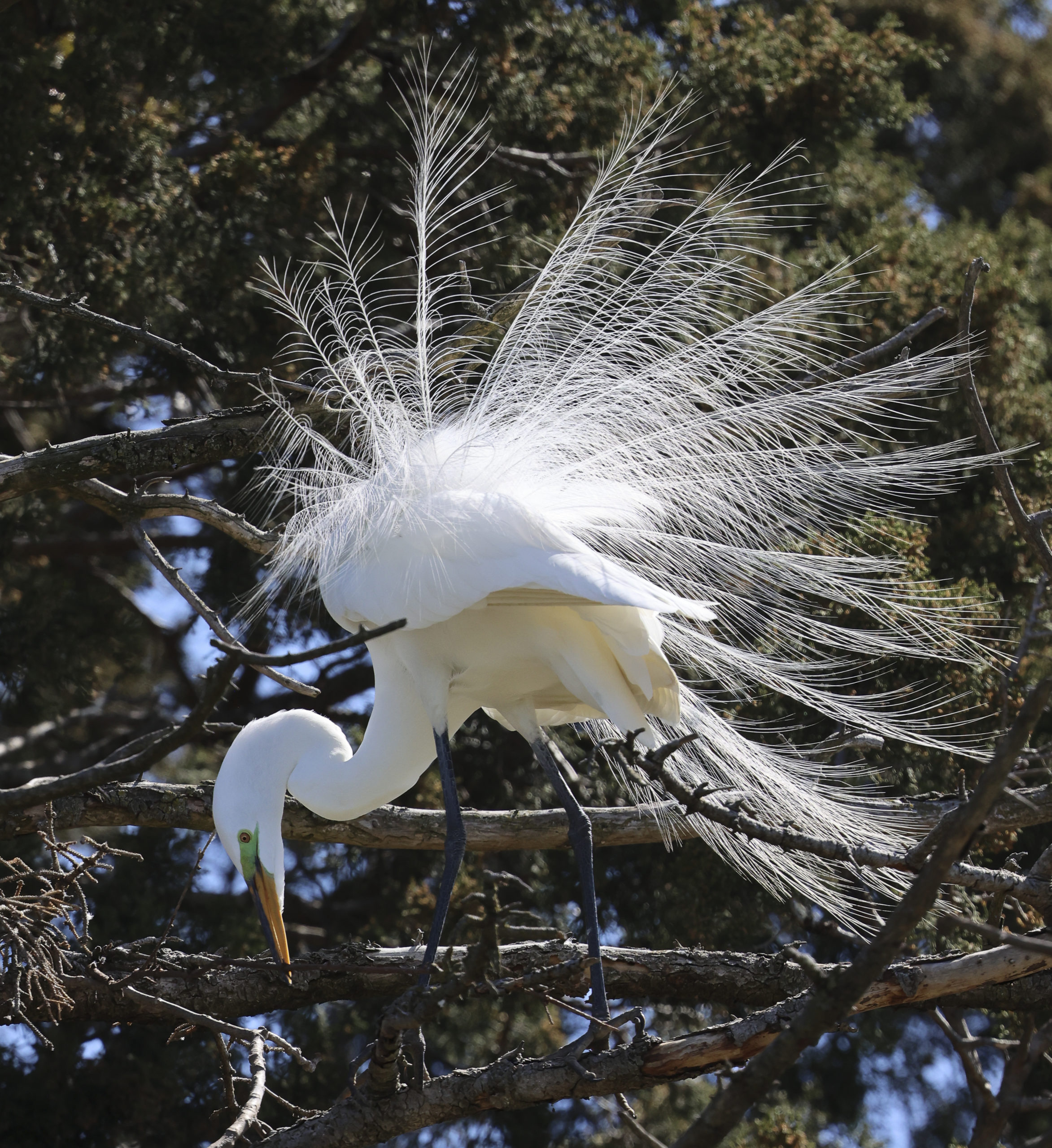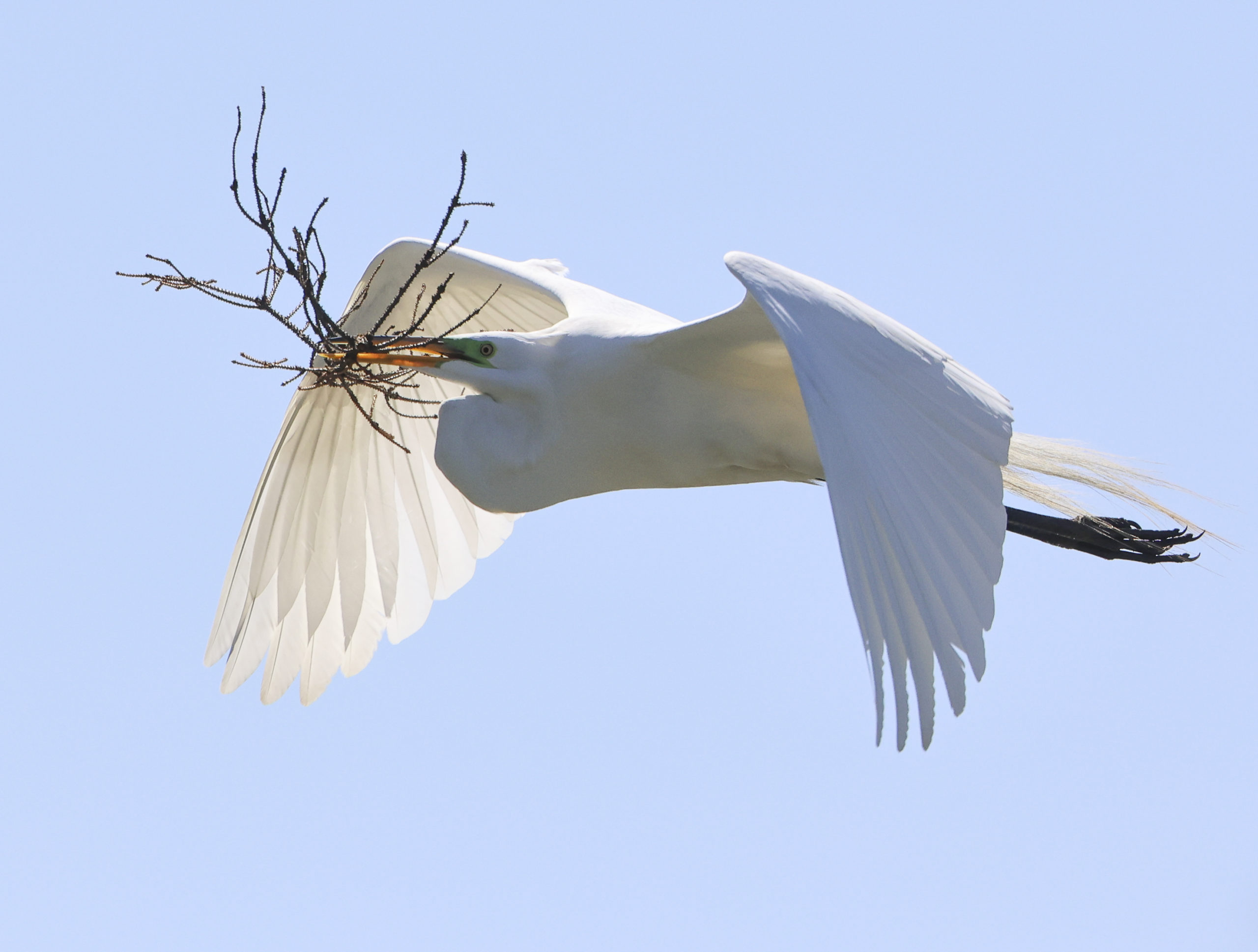Creature Feature


Birds of a Feather: Colonies and Rookeries
By Wayne Bierbaum
I just came from a trip to York and saw a small rookery of great egrets getting started in a small park. Remarkably the park was very busy with people—especially people with cameras and binoculars. The part of the park being used by the birds was roped off but I was still amazed that the birds were more intent on amorous displays and nest building than worrying about the viewing public.
I counted nine easily visible nests and a few more that were just getting started by early arriving males. The males seemed to be intent on gathering sticks and ceremoniously placing them in their nest, all the while, fluffing and primping their long flowing feathers.
In the late 1800s, hat designers coveted those long-flowing feathers, leading to the snowy egret, great egret and other wading birds being hunted in tremendous numbers. The birds were headed toward extinction. The Smithsonian Magazine (March 2013) describes how dire the situation was for the birds but also how the slaughter was stopped. “Egrets and other wading birds were being decimated until two crusading Boston socialites, Harriet Hemenway and her cousin, Minna Hall, set off a revolt. Their boycott of the trade would culminate in formation of the National Audubon Society and passage of the Weeks-McLean Law, also known as the Migratory Bird Act, by Congress on March 4, 1913. The law, a landmark in American conservation history, outlawed market hunting and forbade interstate transport of birds.”
Unfortunately, in December 2019 the act was severely weakened when the federal government eliminated criminal penalties for incidental bird deaths. In 2021, the U.S. Fish and Wildlife Service revoked the policy and returned to prohibiting incidental take and applying enforcement discretion.
“The impacts of climate change coupled with loss and degradation of habitat are pushing more and more wildlife species to the brink,” said Secretary of the Interior Deb Haaland in a press release.
On the north shore of the Susquehanna River, just below Route 1, is a yearly gathering of huge prehistoric-looking birds. The pterodactyl-like great blue herons collect themselves along the trees of the relatively quiet shoreline and start building what appear to be incredibly flimsy flat nests. The nest building takes place with a cacophony of shrieks, squawks, and grunts. Two years ago, there were about 35 nests visible from the south shore of the river.
Birds that nest in large groups are said to form colonies or rookeries. These colonies are important social structures. The socialization stimulates pairing, breeding, rearing of the young but it also affords protection from natural predators. The downside to forming colonies is that one disaster can wipe out a whole year of offspring or even a whole colony of adults.
Hurricanes, floods, oil spills, heat waves, hunting, construction projects, intruding vehicles, pets or just (ignorant) people can cause the loss of a colony.
Last year, at the Bolsa Chica Ecological Reserve near Los Angeles, California, a drone crashed into a colony of elegant terns, causing the entire colony to abandon their approximately 2,000 eggs, skipping an entire generation. In Virginia, the Hampton Roads’ South Island was paved, evicting the largest colony of nesting shore birds in the state. About 25,000 migratory seabirds had colonized habitat that was part of the expansion of the Hampton Roads Bridge Tunnel.
As a mitigation attempt, seven sand covered barges were placed near the island to lure the birds an artificial island called Rip Raps Island or Fort Wool. Trained herding dogs are used to chase the birds off South Island. It seems to be working as the rare gull-billed tern has been seen on Fort Wool.
